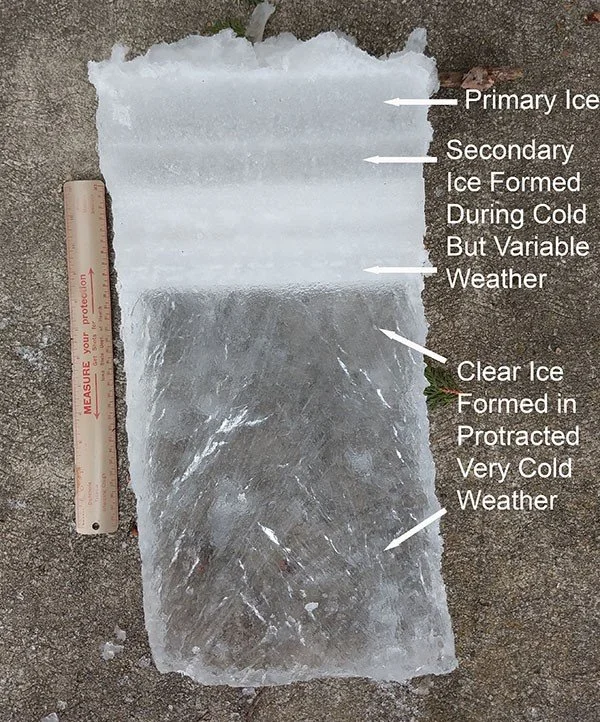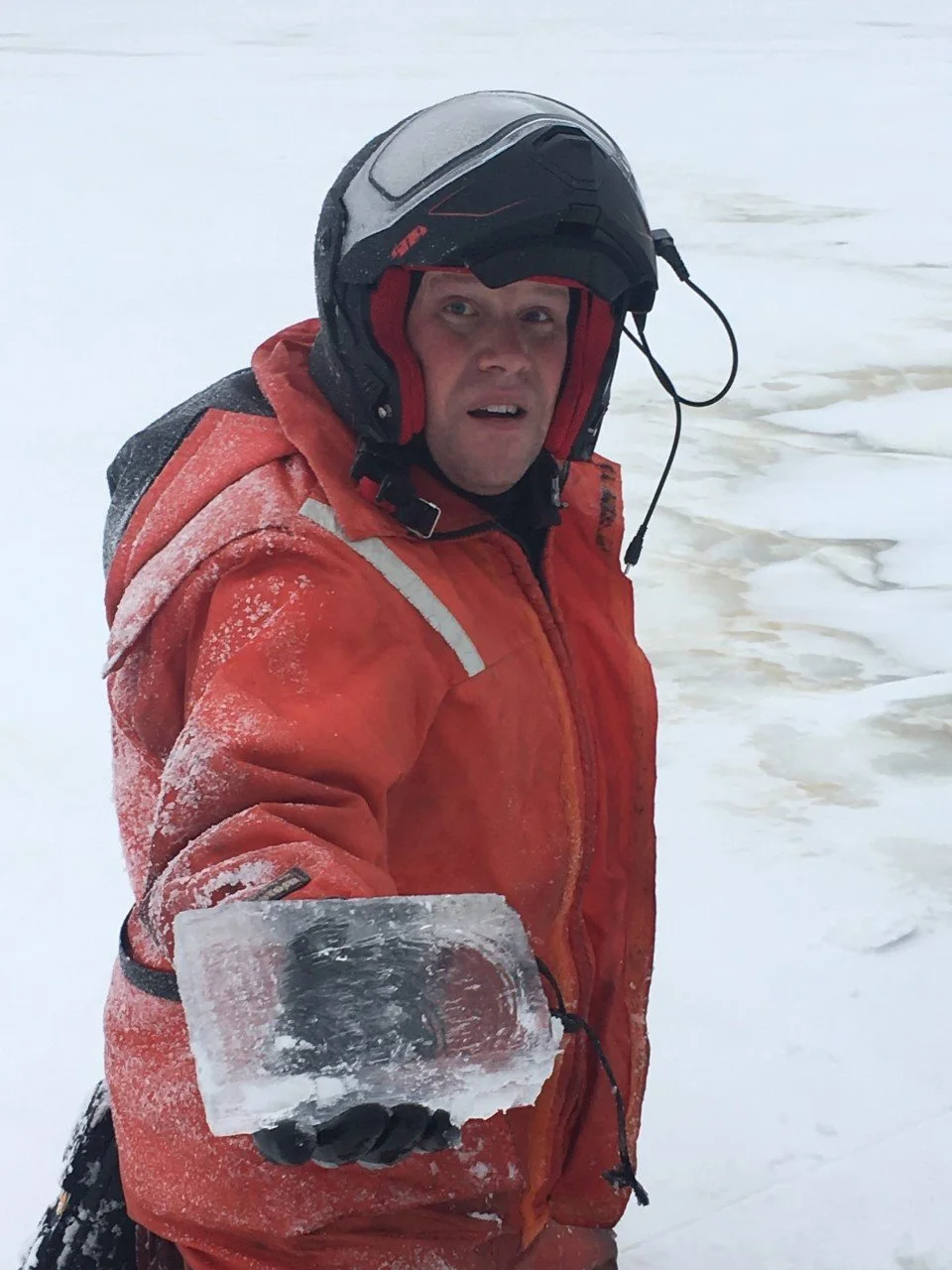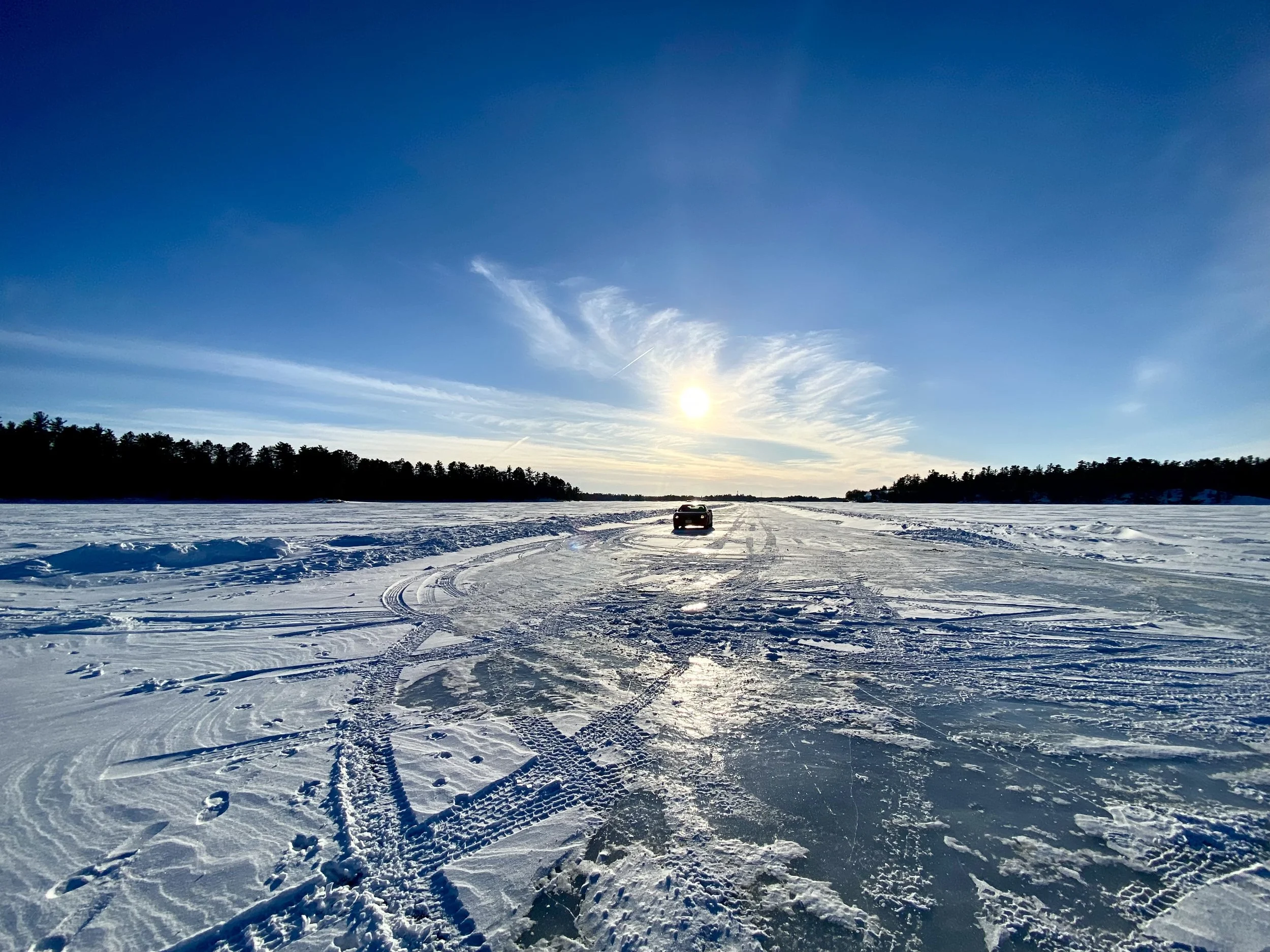Voyageurs Ice Roads: Behind the Scenes
Rainy Lake Ice Road / NPS Photo
The park’s ice roads are one of the most discussed park features in the winter. We receive all sorts of questions ranging from when it opens, where it goes, and if it is safe. We love talking about the ice road. Let’s jump into this fascinating subject and see if we can help answer some of those questions.
There have been people driving on these frozen lakes longer than Voyageurs National Park has been in existence. In fact, you might say that the ice road has existed before there were cars. The Rainy Lake Gold Rush in the 1890s required lots of heavy equipment and supplies before there were even roads in this area. The miners found it was easier to transport that equipment in the winter when the lakes were frozen than in the summer and that is exactly what they did. Miners used horses to pull sleds loaded with supplies and equipment over the frozen lakes to the operations centered near Rainy Lake City on Black Bay. Later, men like Harry Oveson used a Ford model A to drive on Rainy Lake to cut and collect ice for his commercial fishing operation.
Ice core sample / NPS Photo
When you first start to see ice, that doesn’t mean you can drive out on the lake quite yet. There are a lot of measurements that need to take place first. Once the ice is at least 3 inches thick, specially trained park staff working in a team of two or more people for safety will walk onto the ice to measure the thickness and quality of the ice. They are equipped with ropes, ice picks, and wear a flotation suit to ensure they could be rescued if fallen through the ice. Measurements are taken every 50-feet or less by cutting an ice core sample with a chainsaw. A close examination of the ice is the only true method to verify that the ice is of good quality. We want to see clear, solid ice and not white snow or slush that may have solidified.
In some locations, ice measurements are taken more frequently than 50-feet. In areas that we know to have significant current or moving water, such as a narrows, near beaver dams, or natural springs, measurements are taken more often to ensure adequate ice is present. The hope is that we will find 5-inches or more of good, solid high-quality ice. Once that is verified, things will move a bit faster. If we have more than 5-inches of quality ice, staff no longer must take these measurements on foot. They can cover more ground (or should I say ice) on a snowmobile.
Park staff checking ice / NPS Photo
When staff are seeing 5-inches of good ice, the team will now travel along the future ice road on snowmobiles, taking measurements in the same way as before but now every tenth of a mile. In areas that are known or suspected to be hazardous, measurements will be taken at shorter intervals. 5-inches of ice is adequate for snowmobiles, but not for a car or truck. Staff wait until there is a minimum of 12-inches of weight bearing ice before establishing the ice road. Once conditions are correct, a snowplow operator can begin turning the frozen lake surface into an ice road. The plow driver is always observed by a second vehicle ready to help with a potential rescue.
Safety is always our number one priority, for park staff and visitors. You may notice that ice roads are very wide – up to 60-feet more This helps staff deal with snowdrifts, and gives vehicles plenty of room to park and spread out. Parking lots on the ice can be established near areas like trailheads. The ice is checked more frequently in areas that will see many cars parked close together.
All these measurements are carefully recorded and monitored. When staff see the ice diminish to a level that no longer meets requirements, the area is closed. Always check the current conditions on our webpage Alerts & Conditions - Voyageurs National Park (U.S. National Park Service) (nps.gov) and obey posted signs and warnings.
After all that work establishing the ice road, what next? Once the ice road is declared to be open, you can take your vehicle and drive on the lake. You may want to ski on the Black Bay Ski Trail, go ice fishing or take the kids to the Sphunge Island Sledding Hill. Keep a couple of things in mind as you plan your trip out onto the ice. Keep your speed to 30 mph, dress warm, and give other vehicles lots of room as stopping distances can be longer than you expect on ice.
Kallie Kantos
We can never predict the exact dates that the ice roads may be open, but historically they open near the beginning of January, and are closed near the middle of March. Typically, there will be an ice road established on Rainy Lake, starting at the Rainy Lake Visitor Center boat launch which will lead to the Black Bay Ski Trail or possibly as far as Dryweed Island. There is also an ice road beginning at the Kabetogama Lake Visitor Center boat launch leading to the Spunge Island Sledding Hill, and further on to Ash River Visitor Center when conditions allow. A mild winter may result in a shorter ice road, in both distance and time open. You can rest assured that if the ice road is open, you can be confident in driving on it. Be alert, follow the safety guidelines, and enjoy the frozen lakes surfaces in Voyageurs National Park.




